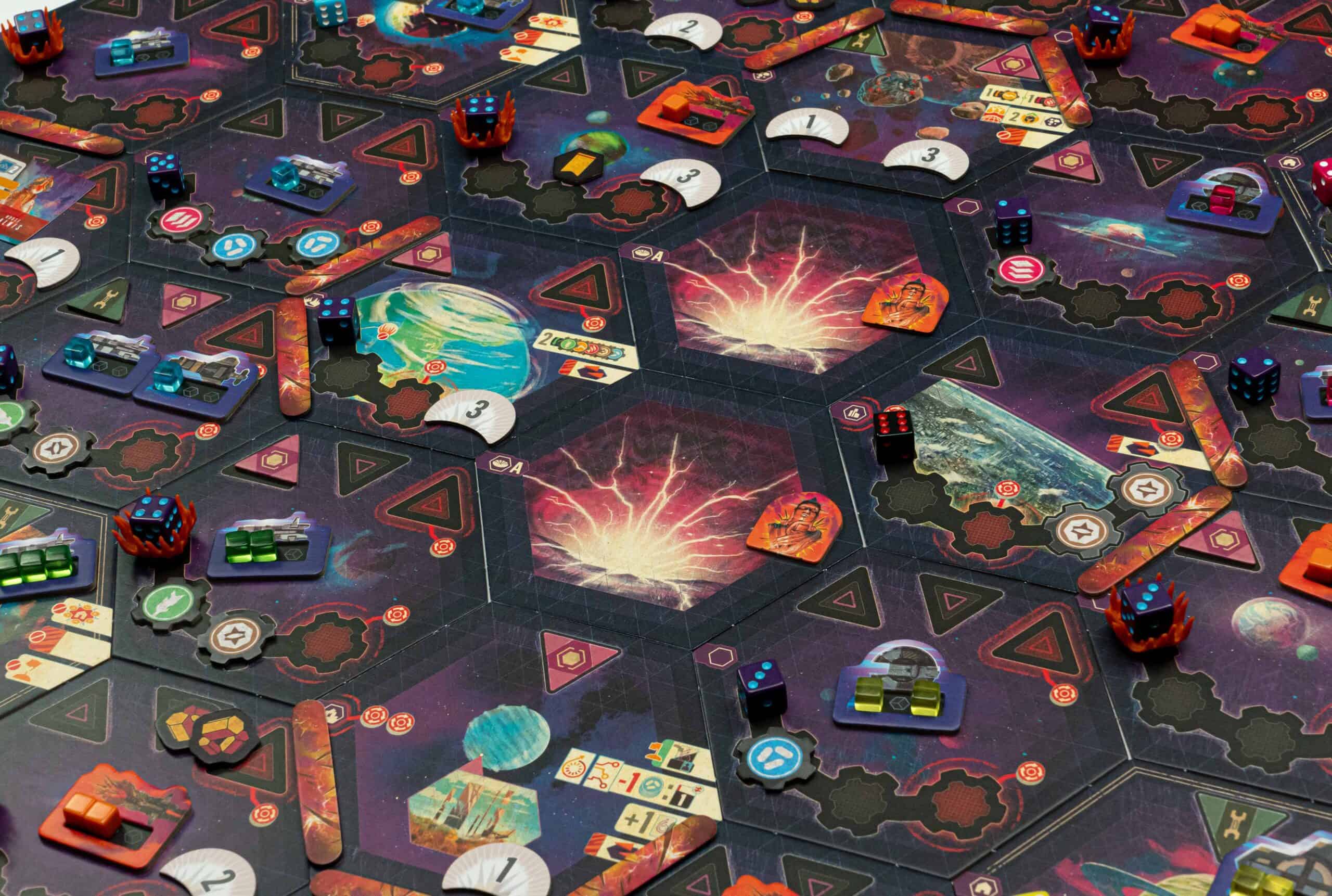If 2022 was a down year for the types of games that we generally play at BGA, then 2023 was as close as it gets to a banner year. Maybe not 2017 levels of euro-goodness, but pretty darn solid across the board, to the point that we had to choose between well over a dozen games for our game of the year award.
Moreover, I don’t feel like I’ve played that many games in 2023, but when I put my list together, I found more than 50 unique games that I’ve given a play or buy rating to (or that I will when I review them in the next few weeks). So, it was a tough list to build this year. Often, I feel like I’m digging deep to fill in the back end of the list, but this year, I had to play and replay several games to decide what falls off.
So, without further ado, here are my top 10 games of 2023, in a very particular (and yet somehow not particular at all) order.
Honorable Mentions
As I said, there were a lot of games that almost made my list this year, so here are a few more that I wanted to talk about but couldn’t bring myself to put on the list over the 10 below:
- Distilled – It looks more complicated and sprawling than it is, which is honestly probably what keeps it off the list (while also making it a great game). The press-your-luck component, balanced against the recipe asymmetry is a blast and one that I’m excited to play more of (with expansions) in 2024.
- Apiary – If this had come out earlier in the year, I may have ranked it higher. Two plays in and I’m really enjoying the spin on worker placement/displacement and how it creates tension among players. My main gripe with this game is the needless space setting pasted over the top. (*Apiary was provided as a review copy by Stonemaier Games).
- Junk Drawer – As simple as simple gets; border flip and write style gameplay, and yet with the objectives and the limited time to complete them (based on when any one player gets stuck), it’s a fun, engaging puzzle every time.
- Imperial Miners – The “Imperial” brand hits again with a very different style of play but the same chibi-fied civ-game artwork that is so recognizable from Settlers. The tableau building and engine creation component is great, and it plays fast.
- Everdell Farshore – I scoffed at the idea of yet another take on Everdell (the five expansions weren’t enough?), but there’s something about going back to basics and building out a clever, easy-to-play spin on the entire formula, this time at the ocean.
- Moon – Moon was the last game off my list this year. The third in the Gaarder trilogy of shoebox-style games from Sinister Fish. I think I still like Villagers more, but just barely. This one has so much clever, creative problem-solving baked in, once again in an accessible, small box.
- Race to the Raft – It’s Isle of Cats! But coop and in reverse. More than just messing with Chris, I legitimately enjoyed the experience of working through several different scenarios and the fun way it allows you to build a strategy with your teammates.
- Mindbug: First Contact – About as fast of a Magic descendent as there is. With just a handful of cards, a quick play time, and ample expansion options on the way, Mind Bug is going to live in my bag for conventions as a 10-minute two-player game for the rest of time.
- Waffle Time – It’s a silly theme, and it fell into the batch of shrug-inducers from AEG at Gen Con this year, but it was actually a heck of a lot of fun. The action selection mechanism is clever and encourages careful consideration and draft selection with your opponents, while the act of building out a waffle is just joyful. (* Waffle Time was provided as a review copy by AEG).
- Akropolis – It’s abstract as all hell, but it provides ample problem-solving options, and the scoring mechanisms weave together seamlessly, similar to Cascadia. It’s not quite as high on my list as Cascadia because it isn’t as modular as that game, but it gave me similar feelings, and I can play it online.
- Beer & Bread – Scott Almes’ games tend to fall flat for me, but this one really clicked. It’s fun, engaging, finely tuned, and feels like a full-blown euro in a quick two-player experience like only Uwe Rosenberg has been able to do before.
10. Barcelona
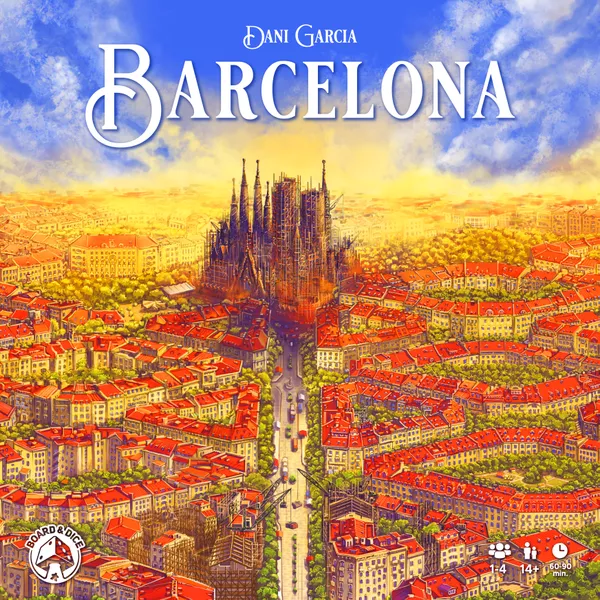
Barcelona is the first game from Board & Dice reflecting a new art style direction for the company, so immediately it caught my eye. The gorgeous cover with red-roofed buildings zig-zagging across the city and the cathedral rising at the horizon is gorgeous, and the gameplay nearly matches it.
One of Dani Garcia’s first designs (Arborea was a Kickstarter campaign that is slowly making its way into the world around the same time), Barcelona does so many things right. First off, you should know it’s a point salad of a game, so if you’re not a fan of Feld’s “everything you do is points” style of design, this may not be for you. But for those who enjoy the smorgasbord of positive feedback a game like that provides, Barcelona is deeply satisfying, from the forced building mechanism that slowly builds in the map to the variable action selection process that allows you to move around that map freely. It’s a wonderful, engaging, and well balanced experience, and one of my big surprises of the year.
* Barcelona was provided as a review copy by Board & Dice
9. Cyberion
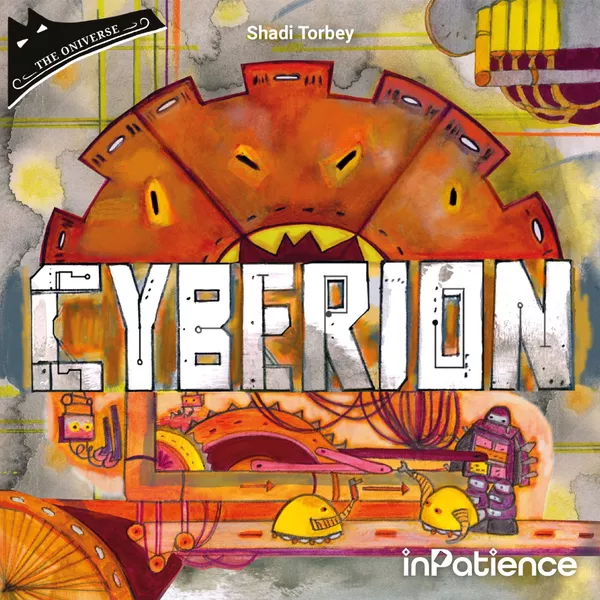
When I got into hobby board gaming, one of the first things I did was research solo gaming. At the top of the list was Onirim, a deck-management game from Shadi Torbey. Almost immediately after I picked up the second edition of that game, I was gifted with the one-two punch of Sylvion and Castellion. Those three games were mainstays on my table for years and made Torbey games automatic buys.
But the following releases didn’t click as much for me. Nautilion and Aerion in 2016 and 2019 fell flat as being a bit more convoluted and less intuitive than previous editions (requiring the expansions to really be engaging), and Stellarion in 2022 was a complete dud, both too easy and too convoluted at the same time. Torbey games work when they flow, allowing you to make interesting decision after interesting decision, and while those first five games do that to varying degrees, Stellarion did not.
So I was hesitant with Cyberion, but not so much that I avoided it. I’m glad I did not because it is potentially my favorite of Torbey’s Oniverse games since the first. Being able to upgrade your machines and symmetrically approach the puzzle, layering new and interesting ways to approach each challenge, and always being just one or two cards away from victory at the end is immensely satisfying, making this one of Torbey’s very best.
8. Atiwa
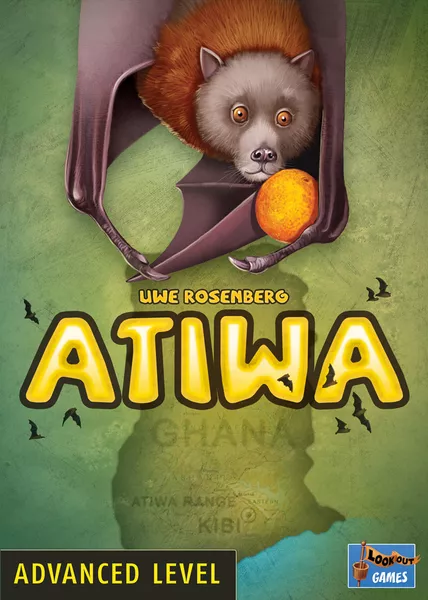
Rosenberg has three types of games in my eyes—the sprawling epic farming simulators, the 1-2 player dueling games, and then the stuff in between. The stuff in between is a mixed bag category with some games that work exceptionally well and others that feel more like experiments to try new out mechanics (Reykholt).
Atiwa feels like one of those games; ostensibly in the same bucket as his larger oeuvre—a game about farming with worker placement. But it does many things differently. You’re slowly building up your personal play space by purchasing new cards. Your resources all flow into one another. Livestock allow you to plant more trees, which produce more fruit, which attract more bats.
And there’s the issue of balance. Training your families allows you to place more bats on your cards and provides gold for your efforts. Not training your families saves you actions, but leads to pollution that costs points and valuable space. It’s a unique experience and one that still somehow feels like a Rosenberg. I hope to see more of this type of experimentation in the worker placement space from him in the future.
7. Nucleum
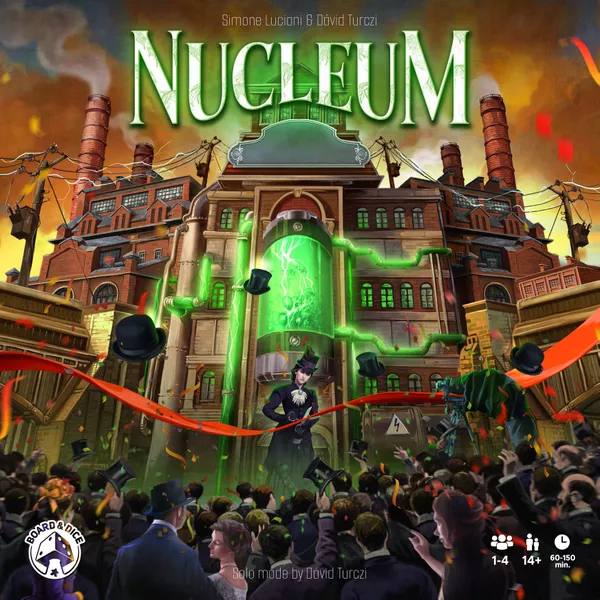
A late-year release, Nucleum is a game I wanted to like. After 10+ years of doing this, I have learned how to tell the difference between wanting to like something and actually liking it, though. Gone are the days of giving Scythe a glowing review because I assumed it would be good, only to find out a few years later I’d rather not play it at all.
Introduced to us at Gen Con as Luciani and Turczi’s spin on many Brass-like mechanics, Nucleum has much more going for it than that. It’s more open ended than Brass, to start. You can build just about anywhere, don’t need to consume resources to power things, and your tableau is constantly evolving with more than just location options. Combined with the technology that is unique to each player and the map’s slow evolution, it is a deeply satisfying game and a perfect one for ongoing map expansion. I’m very excited to get my hands on Australia later this year.
6. Dorfromantik: The Board Game
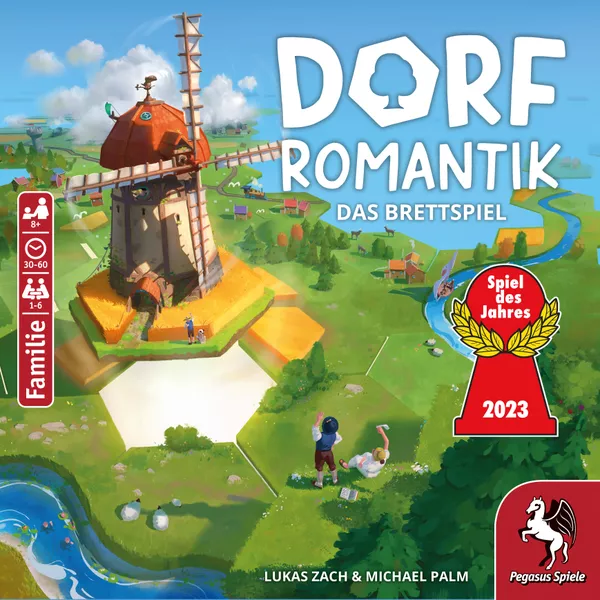
I had a chance to play Dorfromantik, as a video game, a couple of years ago. I had to play it through a virtual machine on my Mac (as it remains PC-only), and fell in love with it. My first thought, though, was “this is a board game.” It turns out I wasn’t the only one who felt this way.
Unlike many other virtual experiences that feel like board games, though, this one didn’t have the ridiculous amount of tracking or RNG that makes it nearly impossible to translate into cardboard. The experience is a nearly perfect 1:1 translation in the Spiel des Jahre winning coop game from Pegasus Spiele. Upon my first play last spring, I said it was a masterpiece of the genre, and I’m glad I’ve now had a chance to play through its full campaign alone and with my family.
5. Star Wars: The Deck Building Game
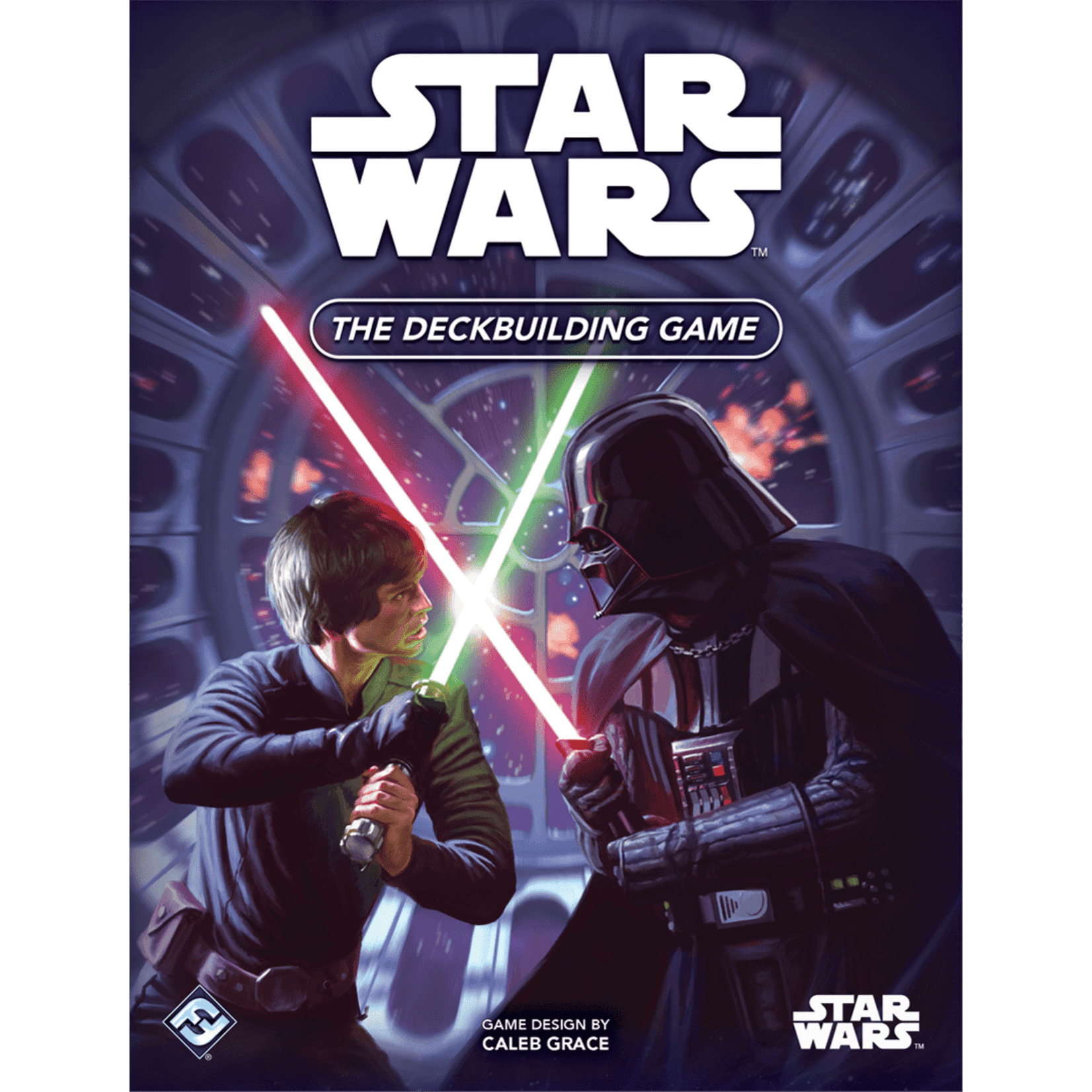
When it was first announced, Star Wars The Deckbuilding Game (SWTBG) seemed like a quick cash-in from Fantasy Flight Games on their Star Wars license. And you know what? It might have been. The game is relatively thin in terms of content, with just enough cards and options to play a two player game, but it’s also a finely tuned, well edited, easy to teach two player dueling experience that I’ve had a blast playing with my kids and friends alike.
Yes, it’s got a lot of Star Realms DNA in there, drawing on the shared purchase line, the base attack mechanisms, and the race to arms that define the Star Realms experience, but Star Wars The Deck Building Game does enough new things to stand out—from the ability to pick off your opponent’s options in the buy row, to the selection of new systems and the special abilities they offer when one of your systems is destroyed. I wish there was more content coming from Fantasy Flight for this one, but after the last five years, I highly doubt it. Nonetheless, I’ll be playing this one as is for years to come.
4. Oranienburger Kanal
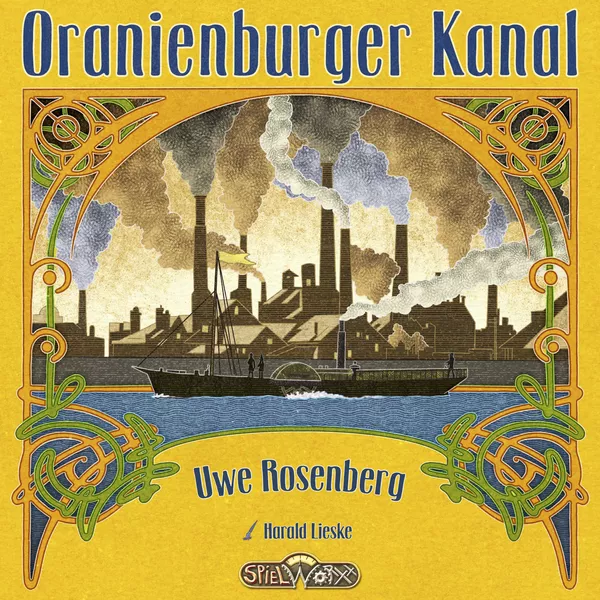
You know it’s a good year when there are two A-tier Uwe Rosenberg games released, and 2023 did not disappoint. Oranienburger Kanal was not quite as accessible as Atiwa unfortunately. Released through Gamefound by Spielworxx (meaning not many additional copies were printed), Oranienburger Kanal also had the distinct dishonor of relatively bland, forgettable artwork. It didn’t look like much and it was a bit pricey (as games are these days) for a 1-2 player experience.
But at the table, the game is a revelation, taking what I love about Cave vs. Cave and making it more interesting with a mix of different road types, multiple ways to activate locations, and a sprawling variety of different options for your decks. It plays perfectly as a two-player dueling game, but it’s also a blast as a solo experience, yes with the Rosenberg high score race approach, but also with enough engaging options to make each action a puzzle on its own. I’m excited for more decks, more ways to play, and the inevitable big box expansion of the mechanics into a four-player game.
3. Age of Innovation
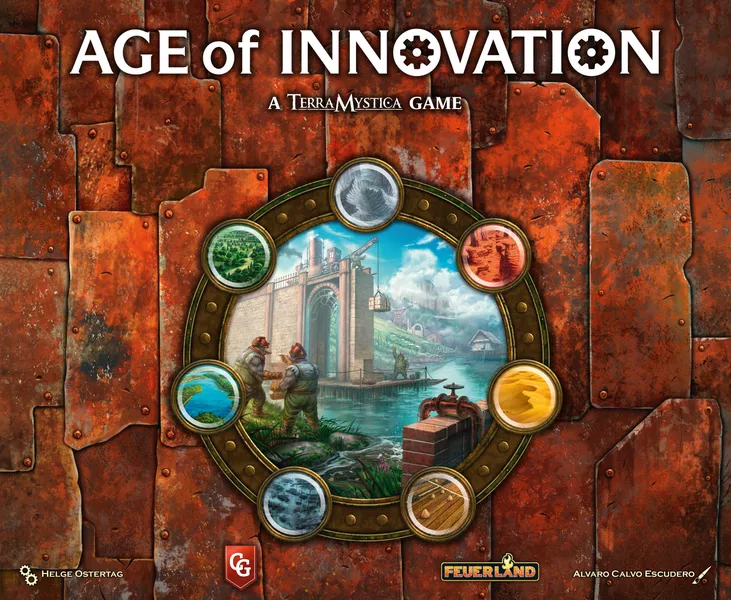
I circled around the Capstone Games booth for three days at Gen Con deciding whether this game was worth buying or not. Maybe they’d sell out (they did). Maybe it would be the best of the trilogy (it is). But it’s also very large and wouldn’t allow me to fit much else in my luggage (it didn’t).
In the end, this was the one game I bought at Gen Con, and I don’t regret it one bit. While it was delayed a week after the airline misplaced my luggage, I was finally able to get it to the table and played it in succession several times. Terra Mystica was an all-timer for me but fell off when I added Gaia Project to my list a few years ago. But Age of Innovation puts itself right back up there as one of my favorite euro games because it fixes much of what made Terra Mystica less interesting. Greater asymmetry without losing balance, upgrade tracks that are interesting and competitive, and a map engagement option that doesn’t feel so loose and distant as in Gaia Project, plus a built-in automa that works from day one.
If you asked me to list the differences from Terra Mystica, it wouldn’t sound like much, but in the aggregate, the whole is so much more than the sum of its parts that I cannot recommend this enough. A masterpiece that builds on what made the previous games so great.
2. Rebuilding Seattle
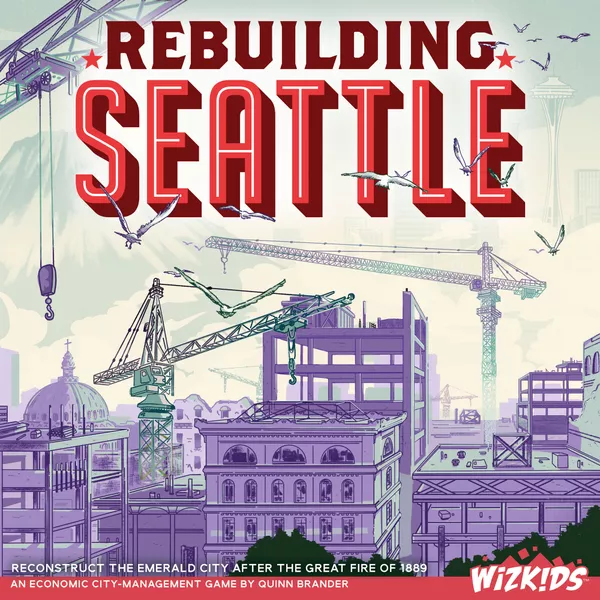
For most of the year, I had Rebuilding Seattle pegged as my game of the year. When I played it at Pax Unplugged in 2022, I knew I had to have it. It was quick, accessible, and loaded with interesting decisions, from the cards you purchase to when it makes sense to trigger a scoring card (and how it might affect your opponents). Sure it’s a game set in Seattle, where I grew up, but more than that, it’s a perfect distillation and consolidation of polyomino building mechanics and tableau building economics. It’s fast and fun, and I have played it more this year than any other game on the list.
Unfortunately, it seems to have come and gone relatively fast, and there wasn’t much of a push behind it by WizKids, so I implore you to check this one out while you can, because I wouldn’t be surprised if it ended up out of print and hard to find within a year or two.
* Rebuilding Seattle was provided as a review copy by Wizkids
1. Voidfall
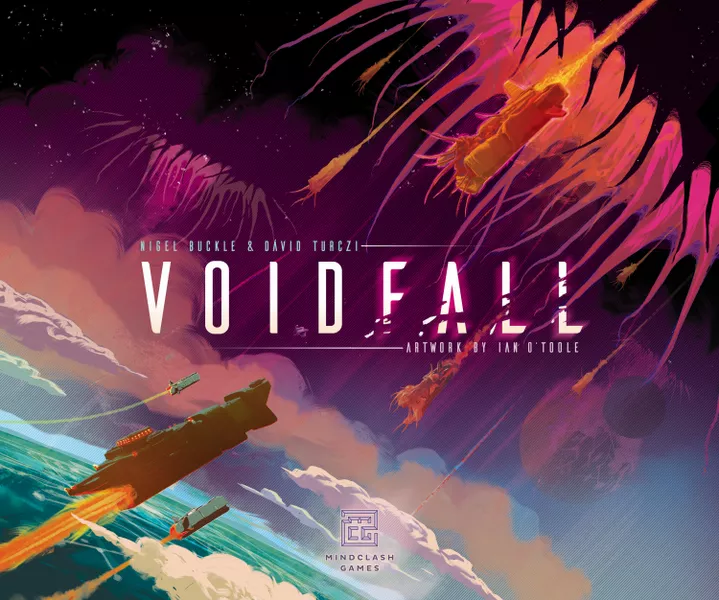
Voidfall is a behemoth of a game. It’s long, it’s arduous to learn (and even more arduous to teach), and there are at least three distinct ways to play it, often with subvariants to make things even more complicated (if you so desire). I spent more than two weeks with this set up on my table downstairs, learning and relearning it until I felt comfortable, and even then the rulebook was propped open in each subsequent play. But something funny happened along the way. The iconography was internalized, the gameplay expanded in my mind, and I realized that this is one of the best mechanical challenges I’ve experienced in a board game in the last five years. There are many people who will balk at Voidfall, and I don’t blame them. And I would never recommend playing with a full player count, or it would take most of a day. I also bemoan Mindclash’s decision to call it a 4X game when it is very clearly a euro experience with a 4X theme (you don’t really attack or build or explore much in the game beyond the core map mechanisms). But when you get past all that, it feels like the kind of messy, authored experience you can only get in a board game. The kind that I would dream about and work through moves from the next day.
It’s a funny game to have at number one because I could recommend Rebuilding Seattle to almost everyone and would recommend Voidfall to only a select few, but there were no other games in 2023 that made me feel as good as Voidfall, and it will be a top-shelf for years to come.

